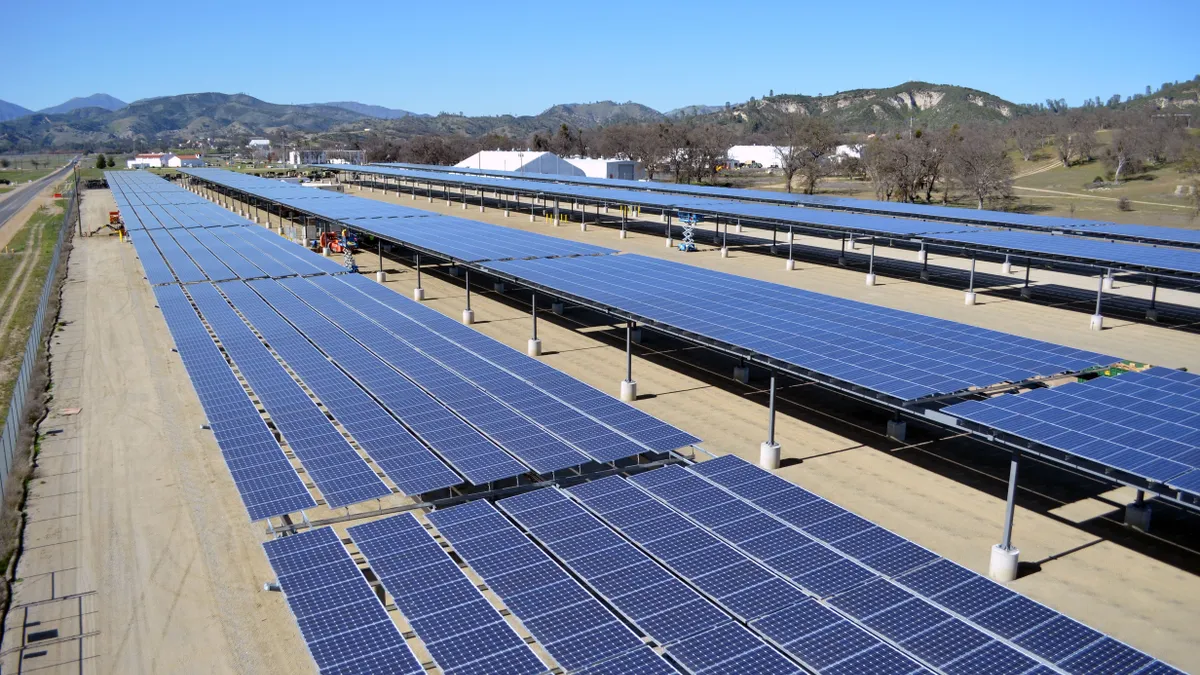With “B” grades, Hawaii, Colorado, Connecticut and Texas lead U.S. states in developing microgrid policies, creating markets to support them, and installing them, according to a report by Think Microgrid, an advocacy group.
However, 32 states, Arizona, Florida and Oregon among them, received “D” ratings — the lowest grade issued — in a sign of the challenges facing microgrid development, Think Microgrid said in its inaugural state scorecard released last month.
California, Puerto Rico, the District of Columbia and 13 other states received “Cs.” The grades were based on five metrics: deployment, policy, resilience, grid services and equity.
“It's not clear that most of the states actually have a cohesive strategy around what they're doing,” Cameron Brooks, Think Microgrid executive director, said Friday. “It's not just about reforming the policy here or creating a resilience plan there, it's tying these pieces together so that it's a more cohesive strategy.”
Even so, the U.S. microgrid market is expanding and diversifying, driven by increasing demand for resilience, federal incentives, favorable state policies and corporate sustainability goals, according to the report.
Since 2017, about 2,724 MW of microgrid capacity has been added in the United States, including 841 MW of “advanced” projects that have distributed energy resources like solar and energy storage, the report said, citing data from research firm Wood MacKenzie.
“Wood Mackenzie expects fossil-fuel microgrid solutions to persist for at least several years until long-duration energy storage technologies achieve broader commercialization,” the report said. “However, there is evidence that advanced microgrids that incorporate multiple DER technologies will soon reduce the scale and utilization of fuel-based generation, while not displacing it entirely.”
Microgrids are a network of distributed resources, such as solar panels and backup generators, and loads that can disconnect from a wider grid or operate in areas that don’t have a grid system.
They offer an opportunity to “fundamentally change the architecture of the grid” in ways that provide resiliency, clean energy and equity benefits and that are responsive to local conditions and local needs, Brooks said.
The commercial and industrial sector has seen explosive microgrid growth “because the value is so clear and easy [to see] and the implementation path is pretty easy,” Brooks said.
State policy is the biggest barrier to microgrids, especially multi-customer microgrids, according to Brooks and the report.
“Technically, there is no reason why those can't exist,” he said. “The only thing that stands in the way of a multi-customer microgrid is state policy that restricts who can implement a solution like that.”
The California Public Utilities Commission, for example, this year rejected a microgrid proposal from Sunnova without holding a hearing on the plan, Think Microgrid said in the report.
Grid challenges, such as extreme weather, call for a re-examination of traditional utility business models and regulations that do not consider the opportunity for direct investment, ownership and operation of grid-connected energy technologies such as microgrids, Think Microgrid said in the report.
The California PUC has developed a microgrid tariff, but not a single customer has taken service under it, according to Brooks. “Is that progress? Or is that an example where perhaps the policymakers had their heads down in such a way that they weren't looking at the bigger picture and they designed a tariff using the old rules that they had?”
Companies, individuals and communities are investing heavily in sophisticated energy technology, including rooftop solar, electric vehicles, electric chargers, and backup power systems to provide resilience, Brooks said.
“If we don't resolve some of these policy barriers, there's a huge risk that we're leaving a lot of value on the table, because all of that energy technology could be coordinated in a way that's not only serving that customer, but it's actually making our grid stronger, more resilient,” he said.
At the same time, electricity rates are going up and utilities may be limited in how much capital they can spend on infrastructure, according to Brooks.
“Why wouldn't we want to figure out the ways that we could leverage as much private capital and other public capital?” Brooks said, noting the federal government is making major energy investments through the Inflation Reduction Act and other mechanisms. “We should be trying to figure out how we can get the most value out of all of those kinds of investments, and it's the policy barriers that are the thing that limit us creating more value.”
Think Microgrid urged states to develop microgrid roadmaps to identify ways for microgrids to address grid vulnerabilities and state public policy goals.
Think Microgrid’s members include Ameresco, Bloom Energy, Eaton, Enchanted Rock, Schneider Electric and Sunnova.






















